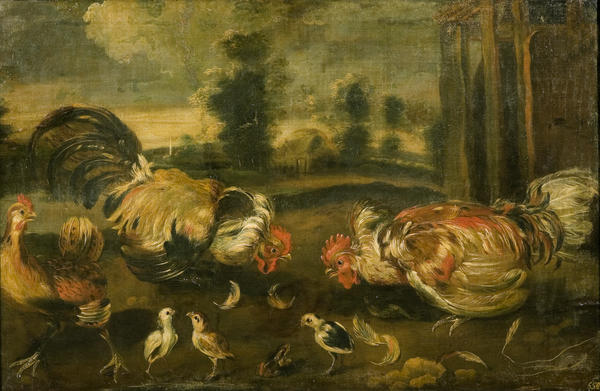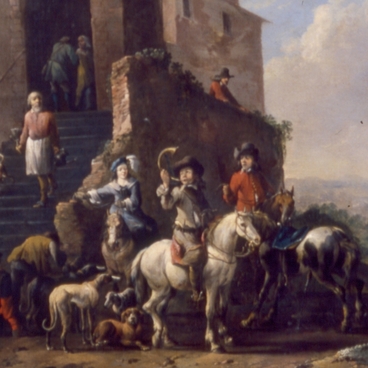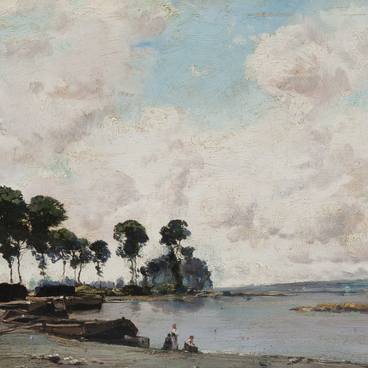In the 17th century a special painting genre was developed in Flanders — ‘poultry yards’ which combines the features of the animalistic genre and still-life. Most often cock fights were depicted. On the first glance, there is a contradiction here for the still-life implies the depiction of ‘dead nature.’ Nevertheless, it is an obviously ‘staged’ still-life.
The artist arranges ‘subjects’ — cocks, pheasants, peacocks and other figures of the poultry yard — at such angles that their decorative qualities, in the first place beauty and brightness of feathering, would be accentuated. With this, it is a very live, expressive animalistic scene. The behaviour of animals obviously resembles similar behaviour of people: tipsy, flushed men settle disputes with fists. The hen, a wise woman, takes the children away from the sin as far as possible.
Two chickens copy their fathers while one does not care at all, it looks closely at the frog with great interest which, in this particular case, personifies equanimity, unlike the cocks. In connection with great popularity of this theme the picture throughout its stay in the museum was attributed by researchers to various masters: Natalia Obolenskaya, Chief Curator of the Radishchev Museum,
assumed in 1956 that the author is Melchior d’Hondecoeter.
assumed in 1956 that the author is Melchior d’Hondecoeter.
There was also a version about the author being a Flemish artist of the 17th century from the circle of Adriaen van Utrecht. In the opinion of Victoria E.Markova, Doctor of Arts, staff member of the State Museum of Fine Arts, the picture was most likely painted in the 18th rather than in the 17th century. Based on the engineering and technological studies it was confirmed that the picture was indeed painted in the 18th century. Its author is probably a Flemish artist, follower of the famous masters of ‘poultry yards’ Melchior d’Hondecoeter (1636-1695) and Frans Snyders (1579-1657).
The picture had been most probably kept in the collection of one of Saratov’s art admirers, after nationalization it was kept in the department of fine arts of the Saratov Proletkult (proletarian culture museum) while in 1920 it was transferred to the Radishchev Museum. It is a model of the restorer’s craftsmanship. In 1986 Vladimir A.Solyanov, the museum’s restorer, had carried out most sophisticated work. He remedied the deformation of the author’s canvas, made about twenty canvas inserts into the picture field and along the edges, removed multiple old inscriptions, strengthened the paint layer and primer over all the picture surface, made the layer of varnish that grew yellow thinner. Then artistic restoration was performed, painting areas were restored.



